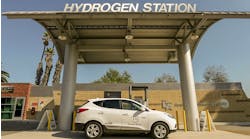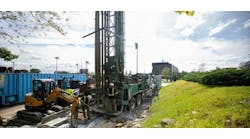With the publicity for movies like “An Inconvenient Truth,” and the growing popularity of initiatives like the U.S. Green Building Council's LEED rating system for environmentally friendly facilities, one might begin to believe that schools and universities have fully embraced the green movement and all education institutions are committed to managing energy more effectively to conserve power and save money.
But many environmental advocates say education institutions can do a much better job of conserving resources and using energy more efficiently. Schools that strive to use only the power they need and find cheaper or cleaner ways of acquiring that power can see the benefits in smaller utility bills and in a more healthful environment.
Need more information
Before administrators and facility managers can be convinced that better energy management is beneficial, they have to grasp what energy efficiency entails. The Center for Energy and Environmental Education at the University of Northern Iowa wondered why school districts in the state were slow to adopt energy-efficient techniques even though the evidence showed that schools could cut energy costs by 5 to 15 percent with low- or no-cost changes in operations or maintenance practices.
The Center commissioned a study and found that administrators at school districts in Iowa generally lacked knowledge about energy-efficiency issues. The study surveyed superintendents, principals and school board members.
Fewer than 30 percent of those surveyed regularly read articles about energy efficiency, and only 16 percent had attended a workshop or a presentation about energy efficiency.
“Overall, little is known about energy-efficiency processes even though there was some indication of general understanding,” the survey found.
The study also found that energy audits are common in Iowa school districts — about half of those surveyed said their districts had one done. However, of those districts that had an audit completed, more than 60 percent said their districts followed through with only a few or none of the recommendations in the audit.
Other findings support the conclusion that school district officials have not learned all they can about managing energy efficiently. Fewer than 5 percent of those surveyed said that their school system had a written energy-efficiency policy for building construction or renovation. For those who had such policies, “the most common difficulties with implementation of these policies was monitoring usage and maintaining consistent compliance,” the survey noted.
Asked about specific state and local programs available to help schools with energy-efficiency initiatives, most of those surveyed were not very familiar with any of them.
Track record
One district in Iowa that has embraced energy-efficient strategies is the Davenport school system. Earlier this year, the federal government recognized the district as one of the Energy Star Partners of the Year for Energy Management in 2007. Davenport estimates that its efficiency efforts have saved more than $1.5 million in energy costs since 2003.
The Davenport district says its energy-management program has resulted in energy costs per student of $88.46, compared with a national average of $181.53.
“The district's energy program concentrates on typical investments in building systems, but it also believes that a very strong component of responsible energy use is changing behavior,” the district says. “The district believes that modeling responsible energy efficiency to students will help bring a better environment for future generations.”
Another school system honored for being in the forefront of energy management is the San Diego Unified School District. It also received an Energy Star Partner of the Year award for 2007. The energy improvements the district has carried out include lighting retrofits involving more than 300,000 lamps and 100,000 ballasts; an energy-management control system that remotely monitors heating and cooling systems in more than 100 schools; lighting and other electrical equipment that are controlled by occupancy sensors; and photovoltaic roofs that generate energy.
Energizing campuses
College and university campuses can lead the way in managing energy more efficiently and conserving resources, but more schools need to show a greater commitment to energy efficiency. That's the view espoused by two organizations, the Apollo Alliance and the Campus Climate Challenge, in a report, “New Energy for Campuses.”
The Campus Climate Challenge is a campaign begun by Energy Action, a coalition of more than 30 youth and environmental groups in the United States and Canada; the Apollo Alliance is a joint project of the Institute for America's Future and the Center on Wisconsin Strategy. Their report spells out the energy policies that they would like to see all college and university campuses adopt.
“Only a handful of campuses have developed comprehensive plans, with targets and timetables, for substantially reducing greenhouse gas emissions and achieving energy independence,” the groups say.
The organizations call upon all higher-education institutions to pursue six basic energy reforms:
- Upgrade to efficiency.
- Build better.
- Move to clean power.
- Expand transportation alternatives.
- Use green purchasing.
- Institutionalize conservation.
The key to managing effectively, the report argues, is planning. “The largest and longest-term energy impact on any campus will come from a comprehensive strategy that examines all campus energy use, the associated costs (both financial and environmental), and comes up with strategies that reduce energy use across the board,” it says.
Kennedy, staff writer, can be reached at [email protected].
Sidebar: Steps to efficiency
The federal government's Energy Star program has developed a set of guidelines to have organizations establish successful energy-management programs. The guidelines consist of seven steps:
-
Make commitment
A school or university should appoint an energy director, establish an energy team and institute an energy policy.
-
Assess performance
This includes gathering data, establishing baselines and benchmarks for determining progress, and analyzing the results.
-
Set goals
“Well-stated goals guide daily decision making and are the basis for tracking and measuring progress,” the guide says. “Communicating and posting goals can motivate staff to support energy management efforts.”
-
Create action plan
“Unlike the energy policy, the action plan is regularly updated, most often on an annual basis, to reflect recent achievements, changes in performance and shifting priorities,” the guide says.
-
Implement action plan
This includes creating a communication plan, raising awareness about the energy-management plan and creating incentives that encourage staff to improve energy performance.
-
Evaluate progress
Information gathered in an evaluation can be used to create new action plans, identify best practices and set revised goals.
-
Recognize achievements
“Receiving recognition from outside sources validates the importance of the energy management program to both internal and external stakeholders and provides positive exposure for the organization as a whole,” the guide says.
The entire 39-page guide is at www.energystar.gov/index.cfm?fuseaction=guidelines.
22
Percentage of energy consumed by lighting in a typical U.S. university building.
Source: U.S. Department of Energy, Office of Energy Efficiency and Renewable Energy




